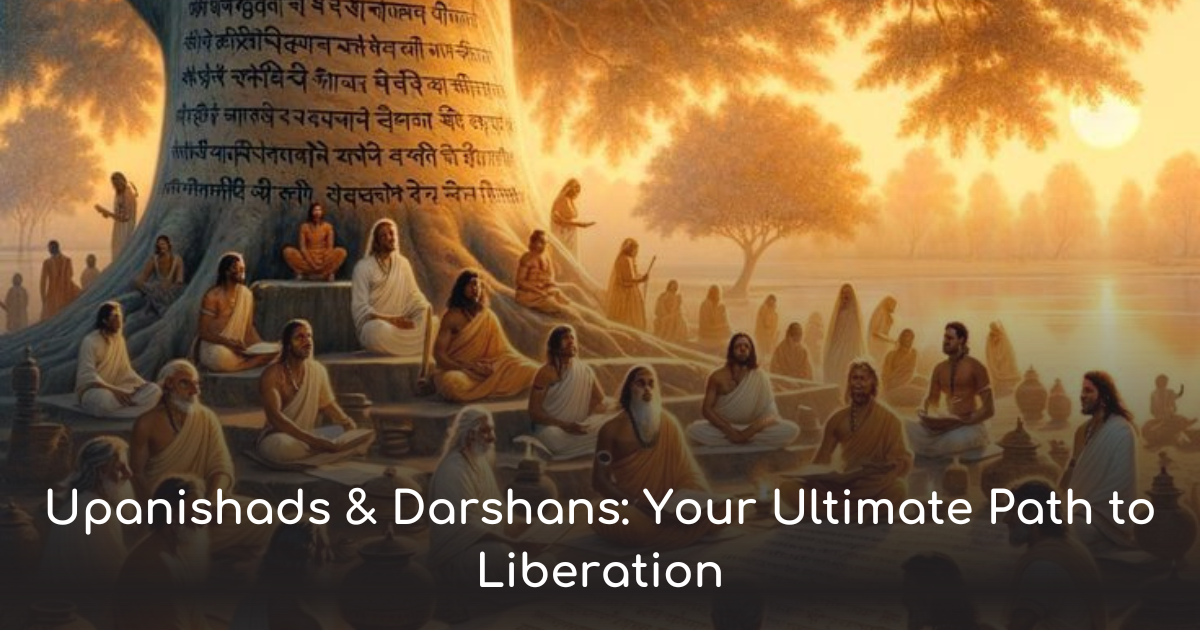7 divine reasons to visit gangotri – a spiritual blessing!

Explore Gangotri, the sacred origin of the Ganga. Discover myths, travel tips, and spiritual wonders in this ultimate guide. A journey to awaken your soul!
Gangotri – Sacred Source of the Ganga and Spiritual Gem of the Himalayas
(Part 1)
Introduction
Nestled in the serene folds of the Garhwal Himalayas in Uttarakhand, Gangotri is a place where spirituality meets breathtaking natural beauty. Known as the source of the sacred River Ganga, Gangotri is more than just a pilgrimage site—it is a sacred symbol of faith, purity, and divine connection. Every year, thousands of devotees undertake the difficult journey to Gangotri, not just to witness the icy origin of Ganga but also to cleanse their souls and find peace.
The significance of Gangotri in Hindu mythology, its role in the Char Dham Yatra, and its divine landscapes make it a destination where the material and spiritual worlds merge. In this blog, we explore the ancient legends, spiritual practices, and journey to Gangotri—an experience that transforms lives and uplifts souls.
The Significance of Gangotri Temple
History and Mythological Background
The heart of Gangotri is the Gangotri Temple, dedicated to Goddess Ganga. According to Hindu mythology, King Bhagirath performed intense penance at this very location to bring the River Ganga down from the heavens to cleanse the souls of his ancestors. Moved by his devotion, Lord Brahma directed the divine river to descend to Earth, but the immense force of her flow was too much for the planet to handle. Lord Shiva intervened, catching Ganga in his matted locks and gently releasing her to form the mighty river.
This spiritual tale isn't just a myth—it is a story etched into the rocks, the rivers, and the hearts of the people who come to Gangotri Temple every year. The temple was originally built by the Gorkha General Amar Singh Thapa in the 18th century and sits at an altitude of 3,100 meters.
Architectural Marvel and Sacred Atmosphere
While modest in size, the white granite structure of the Gangotri Temple radiates serenity and sanctity. Surrounded by snow-capped peaks and pine forests, the temple is usually open to devotees from Akshaya Tritiya (April/May) to Diwali (October/November). Inside, a black stone idol of Goddess Ganga resides, and the air is constantly filled with mantras and prayers.
During the closing season, the idol is shifted to Mukhba village, where winter poojas continue. This tradition emphasizes the undying spirit of devotion, even in harsh Himalayan winters.
Journey to Gangotri Dham – A Pilgrim’s Experience
Starting the Char Dham Yatra
Gangotri Dham is the second stop in the sacred Char Dham Yatra, following Yamunotri and preceding Kedarnath and Badrinath. It holds deep spiritual importance as the birthplace of the River Ganga, which is worshipped as a goddess in Hindu belief.
The pilgrimage isn’t just a physical journey—it is a spiritual transformation. Pilgrims prepare with fasting, prayer, and mental resolve before starting the yatra. For many, reaching Gangotri Dham is about seeking moksha, or liberation from the cycle of birth and death.
Trekking and Devotion in the Himalayas
Although motorable roads reach Gangotri now, the essence of the journey remains spiritual. Devotees chant mantras, perform bhajans, and walk barefoot to express their devotion. The air is cold, the climb is steep, but the faith is stronger.
The road to Gangotri is lined with small shrines, tea stalls, and breathtaking views of the Bhagirathi River. Each step feels like a prayer, each breath a part of divine surrender.
Origin of River Ganga – The Divine Descent
From Heaven to Earth – The Bhagirath Legend
The story of Gangotri begins with King Bhagirath, whose unwavering devotion moved even the gods. According to scriptures, Bhagirath meditated at a sacred rock (now known as Bhagirath Shila) near Gangotri to bring the celestial river to Earth. His goal was to free the souls of his ancestors who were cursed.
The descent of Ganga was so powerful that it threatened to destroy the Earth. To save it, Lord Shiva absorbed the river into his locks and released it as small streams, making the flow gentle and nourishing.
This mythological tale signifies the power of penance, divine intervention, and the immense compassion of the gods. It is this event that makes the origin of River Ganga at Gangotri so sacred to Hindus.
Gaumukh – The Glacier That Births a River
While the temple marks the spiritual beginning, the actual source of the Ganga is Gaumukh Glacier, located around 18 kilometers from Gangotri. This glacier, resembling a cow’s mouth (hence the name "Gaumukh"), is where the Bhagirathi River emerges.
Adventurous devotees often trek to this glacier, braving freezing temperatures and high altitudes, to witness the divine source of Ganga. The trek is difficult, but reaching Gaumukh is considered an act of great spiritual merit.
Char Dham Yatra – Why Gangotri Is First
Spiritual Sequence of the Yatra
The Char Dham Yatra follows a strict route: Yamunotri → Gangotri → Kedarnath → Badrinath. This order is symbolic, representing the flow of life from purity (Yamunotri and Gangotri) to enlightenment (Kedarnath and Badrinath).
Gangotri’s position as the second stop is deeply rooted in tradition. It is believed that visiting Gangotri after Yamunotri ensures that the pilgrim’s body and soul are purified before they seek divine knowledge and salvation at Kedarnath and Badrinath.
Purifying the Soul at the Ganga’s Origin
Ritual bathing in the icy waters near Gangotri Temple is a key part of the pilgrimage. Though freezing, these waters are believed to cleanse not just the body but also lifetimes of karma. Pilgrims perform pooja, aarti, and ancestral rites to honor the departed and seek blessings for spiritual growth.
Ganga River Pilgrimage – Faith That Flows Eternal
Holy Baths and Offerings
For centuries, Hindus have believed that a Ganga snan (holy bath in the Ganga) removes sins and brings divine blessings. At Gangotri, the act holds special weight, as it happens near the river’s origin.
Many pilgrims also perform pind daan (ritual offerings for ancestors), believing that the pure waters help liberate ancestral souls from earthly cycles. The river here is not just water—it is a living deity.
Spiritual Power of Ganga Jal (Water)
Ganga Jal, collected from the source, is kept in temples and homes across India. It is sprinkled during poojas, kept in rituals, and even used to sanctify births and deaths. Its purifying power is so revered that even a few drops are believed to transform a space into a sanctum.
Gangotri – Sacred Source of the Ganga and Spiritual Gem of the Himalayas
(Part 2)
Bhagirath Shila – Sacred Rock of Penance
Just a few meters from the Gangotri Temple lies a large flat rock known as Bhagirath Shila. This humble yet sacred spot is believed to be the very place where King Bhagirath performed his long and arduous meditation to please the gods and bring the River Ganga down to Earth.
Devotees gather here to offer prayers and perform rituals, believing that the Bhagirath Shila holds immense spiritual energy. Pilgrims sit on the stone, meditate, or light small lamps, hoping to absorb some of the divine vibrations from this timeless place of penance.
The rock stands as a silent testimony to the power of determination and devotion, reminding us that sincere efforts, backed by spiritual intent, can even move the heavens.
Gaumukh Glacier – Trek to the Source
Approximately 18 kilometers beyond Gangotri, at an altitude of around 4,000 meters, lies Gaumukh, the actual glacier where the River Ganga (here called the Bhagirathi) begins her earthly journey. The name “Gaumukh” means “cow’s mouth,” and it perfectly describes the natural shape of the glacier’s snout.
The trek from Gangotri to Gaumukh is a challenging yet spiritually rewarding journey. The path winds through rugged mountains, icy streams, and meadows filled with alpine flowers. Devotees and adventurers alike undertake this trek with a mixture of reverence and awe.
Along the way, one encounters Tapovan, a meadow that serves as a base camp for spiritual seekers and mountaineers. The area offers panoramic views of Shivling Peak and other towering Himalayan giants, making it a perfect place for meditation and solitude.
Ganga Aarti at Gangotri – A Divine Spectacle
Each evening at sunset, the banks of the Bhagirathi River near the Gangotri Temple come alive with devotion during the Ganga Aarti. Priests clad in saffron robes chant Vedic hymns, ring bells, and wave massive fire lamps as devotees gather to offer their prayers to Mother Ganga.
The river glows under the reflection of the oil lamps, and the sound of mantras fills the air, creating a moment of transcendental beauty. The aarti is not merely a ritual—it is a divine celebration of gratitude and surrender.
People from all walks of life—pilgrims, locals, and even curious travelers—stand together in reverence. This spiritual gathering fosters unity and reminds us that faith, like a river, flows through every heart that believes.
Best Time to Visit Gangotri – Plan Your Pilgrimage
Planning your visit to Gangotri at the right time ensures both safety and the opportunity to experience its spiritual offerings fully. The best time to visit Gangotri is between late April (Akshaya Tritiya) and early November (Diwali), when the temple is officially open.
Ideal Months to Visit:
-
May to June: Pleasant weather, snow-capped mountains, and a high influx of pilgrims.
-
September to October: Post-monsoon clarity, lush surroundings, and fewer crowds.
Avoid:
-
Monsoon Season (July-August): Heavy rains and landslides make travel risky.
-
Winter (November to April): The temple remains closed due to snow, and the idol is moved to Mukhba village.
It’s advisable to check the official opening and closing dates each year, as they depend on the Hindu calendar and local conditions.
How to Reach Gangotri – Travel Guide
Though nestled deep in the Himalayas, reaching Gangotri is now more accessible thanks to improved infrastructure.
By Air:
-
Nearest Airport: Jolly Grant Airport, Dehradun (250 km from Gangotri)
-
From the airport, you can hire a taxi or take a bus to reach Uttarkashi or directly to Gangotri.
By Train:
-
Nearest Railway Station: Rishikesh or Dehradun
-
From there, travelers can hire cabs or board buses to Uttarkashi, then Gangotri.
By Road:
-
Regular buses and shared taxis operate from Haridwar, Rishikesh, and Dehradun to Gangotri.
-
Roads are narrow and winding, so self-driving is best for experienced hill drivers.
Pro Tip: Elderly pilgrims or those with health conditions should consult their doctors and consider staying a day in Uttarkashi for altitude acclimatization.
✨ Plan Your Journey to Gangotri with Ease
Ready to explore the mystical land of Gangotri and experience the divine source of the Ganga?
🧳 Whether you're a spiritual seeker, an adventure lover, or a nature enthusiast, planning your trip can be overwhelming. That’s where www.travelescape.me comes in!
Why Choose TravelEscape?
✅ Curated travel itineraries
✅ Expert guidance on Char Dham routes
✅ Real traveler reviews and tips
✅ Personalized recommendations for stays and food
✅ Safe and trusted planning for solo or group pilgrimages
👉 Visit www.travelescape.me today to explore travel guides, check best times to visit, and get all the tips you need to make your Gangotri yatra smooth, memorable, and divine.
🕉️ Answer the spiritual call of the Himalayas—with TravelEscape by your side.
Gangotri National Park – Nature Meets Devotion
Surrounding the temple town is the breathtaking Gangotri National Park, covering over 2,390 square kilometers. This high-altitude sanctuary offers not only a spiritual retreat but also a chance to witness the untouched beauty of the Himalayas.
What to See:
-
Flora: Alpine shrubs, pine forests, and rare medicinal plants
-
Fauna: Snow leopards, Himalayan tahr, musk deer, and colorful pheasants
The park is a paradise for nature lovers, photographers, and eco-spiritual travelers who seek to blend worship with wilderness. Walking through these pristine paths feels like moving through a temple made by nature itself.
Conclusion – Gangotri: Where Divinity Descends on Earth
From myth to mountain, from glacier to prayer, Gangotri embodies the timeless journey of the sacred River Ganga and the deep-rooted faith of millions. Here, the material world fades away, and the spirit is awakened by chants, snow-laced winds, and the ever-flowing water of life.
Gangotri is not just a place—it is an experience. It invites you to let go, to surrender, and to listen—to the silence of the peaks, the stories of the saints, and the voice of the river that flows with the rhythm of the universe.
Whether you are a devout pilgrim or a seeker of peace, a visit to Gangotri promises to nourish your soul and purify your heart. It reminds us that faith, like the Ganga, should always flow—steady, strong, and sacred.
🙏 Call to Action:
Plan your pilgrimage to Gangotri, and immerse yourself in the divine energy of the Himalayas. Let the Ganga guide you towards inner peace and spiritual awakening.
If you found this journey inspiring, share it with others and ignite the flame of devotion in their hearts too.
Jai Maa Ganga!
Frequently Asked Questions (FAQs) about Gangotri
1. What is Gangotri famous for?
Gangotri is renowned as the origin of the sacred River Ganga and is one of the four Char Dham pilgrimage sites in Uttarakhand, India.
2. Where is Gangotri located?
Gangotri is located in the Uttarkashi district of Uttarakhand, nestled in the Garhwal Himalayas at an altitude of about 3,100 meters.
3. When does the Gangotri Temple open and close?
The temple opens in late April or early May (Akshaya Tritiya) and closes on Diwali, usually in October or November, due to heavy snowfall.
4. What is the best time to visit Gangotri?
The best time to visit is from May to June and September to October, when the weather is pleasant and the temple is accessible.
5. How can I reach Gangotri?
You can reach Gangotri by road from Rishikesh, Haridwar, or Dehradun. The nearest airport is Jolly Grant (Dehradun), and the nearest railhead is Rishikesh.
6. Is the trek to Gaumukh open for everyone?
The Gaumukh trek requires a permit and is open to trekkers in the summer and early autumn. It is moderately difficult and not recommended for those with health issues.
7. What rituals are performed at Gangotri?
Devotees perform Ganga Aarti, ritual baths in the river, pind daan for ancestors, and daily puja to Goddess Ganga.
8. Is accommodation available in Gangotri?
Yes, there are basic lodges, ashrams, and GMVN guesthouses available for pilgrims and tourists during the open season.
9. Is Gangotri safe for elderly pilgrims?
Yes, but due to the high altitude and rough terrain, it’s advised that elderly visitors take precautions, acclimatize in Uttarkashi, and consult a doctor beforehand.
10. Why is Ganga considered holy in Hinduism?
Ganga is believed to cleanse sins and grant moksha (liberation). Her descent is seen as a divine event, and her waters are used in almost all Hindu rituals.
📜 Reader’s Message & Call to Action
Thank you for joining this sacred journey through the spiritual landscape of Gangotri. In a world full of distractions, this Himalayan abode reminds us of the eternal truth, purity, and peace that lie within us.
🌼 Feel inspired? Share this article with your loved ones and ignite their spiritual curiosity too.
🌄 Whether for pilgrimage, peace, or adventure—Gangotri is calling. Will you answer?
Plan your visit today and let your spirit flow with the Ganga.
Gangotri, Gangotri Temple, Gaumukh Glacier, Char Dham Yatra, Ganga River, Hindu Pilgrimage, Uttarakhand Tourism, Ganga Aarti, Spiritual India, Gangotri Dham







